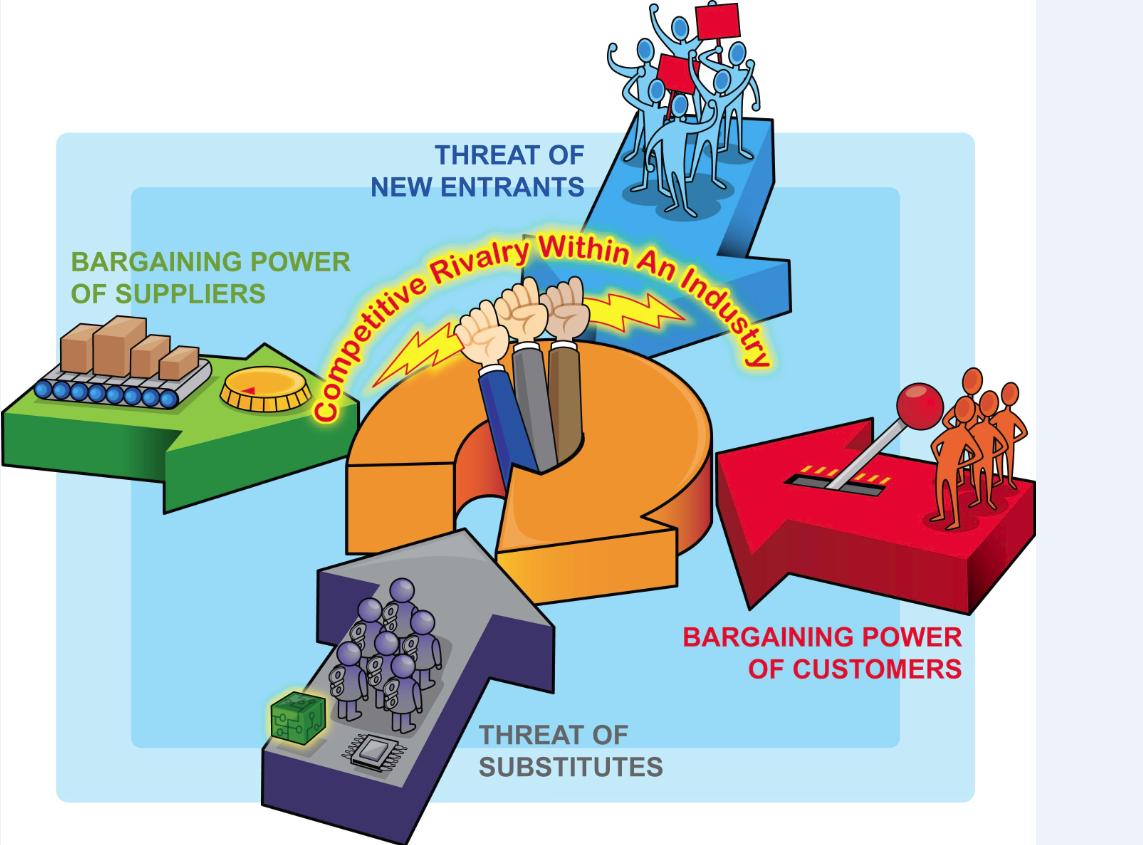This model often use to identifies and analyze 5 competitive forces that shape every industry and helps to determine an industry weakness and strengths.

There are 5 components:
1. Competition in the industry
2. Potential of new entrants into industry
3. Power of suppliers
4. Power of customers
5. Threat of substitute products

The Airline industry provides a very unique service to its customers. It transports people with a high level of convenience and efficiency that cannot not be provided by any other industry or substitute.
Bargaining power of Buyers
The airline industry is made up of two groups of buyers. First, there are individual flyers. They buy plane tickets for a number of reasons that can be personal or business related. There are low switching costs between firms because many people choose the flight based on where they are going and the cost at the time
The service provided is unique. Each airline has a niche. Some airlines focus on cost, while others focus on having the best amenities. Overall the bargaining power of buyers has an extremely low threat in this industry.
Bargaining Power of Suppliers
The top two manufacturers in the world currently are Boeing and Airbus.
In this industry the inputs are extremely standardized. Airline companies only seem to differentiate with amenities. The planes are very similar. Currently some manufacturers are trying to make their plans more ecofriendly.
Airline companies cannot easily switch suppliers. Most firms have long term contracts with their suppliers. Planes are such high capital products that firms probably make long term loan agreements and have more favorable credit terms when they don’t switch companies.
It is difficult to enter into the plane manufacturing industry because of the capital needed to enter. The amount of money and expertise needed to make even one plane is around 200 million dollars.
Airline firms are the only source of income for these manufacturers so their business is extremely important. Based on these things the bargaining power of suppliers has a low threat as well.
Threat of New Entrants
This aspect has a low threat for the airline industry. There are two aspects that do however raise the threat level. First, there are extremely low switching costs. Second, there are no proprietary products or services involved.
This industry requires a large amount of capital and without a strong customer base there will be little to no profit in the first few years. Existing firms can and will use their high capital to retaliate against newer firms with whatever means necessary such as lowering prices and taking a loss.
Threat of Substitutes
This industry has a medium substitute risk level. There are substitutes in the airline industry. Consumers can choose other form of transportation such as a car, bus, train, or boat to get to their destination. There is however a cost to switch. Some means of transportation can be more costly than a plane ticket. The main cost is time. Planes are by far the fastest form of transportation available. Airlines surpass all other forms of transportation when it comes to cost, convenience, and sometimes service.
Rivalry among Existing Players
The rivalry in the airline industry is very intense for many reasons. The industry is currently very stagnant. It seems to be in the mature stage of the business cycle.
The competition is lessened by the
brand identities of different firms.
Recently there have been some changes in some of the forces. Some airplane manufacturers have been making ecofriendly planes, which is a change in the bargaining power of suppliers. This would differentiate the products, raising the threat of suppliers.
Another recent change is the use of web portals such as Expedia to book flights. This positive change creates a whole new group of buyers and makes purchasing flights faster and easier
